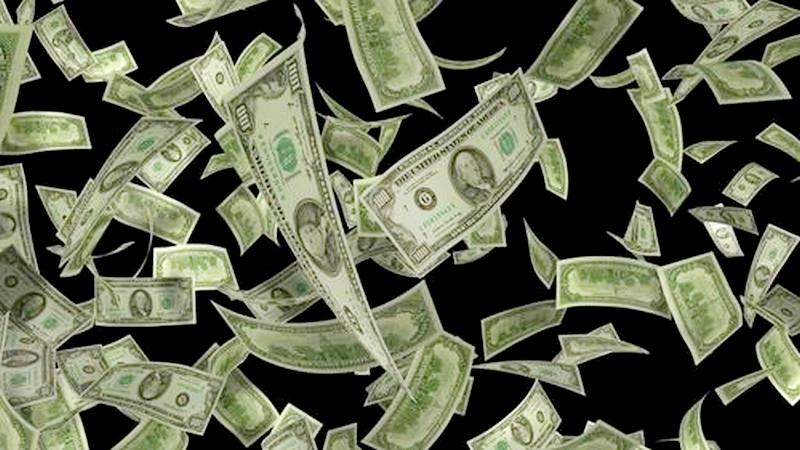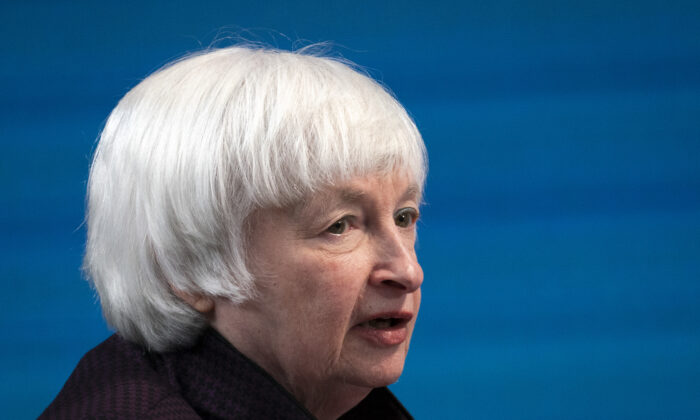Fake Economic Growth And Stealthy Government Default


ZeroHedge - BY TYLER DURDEN - AUG 03, 2021 - 08:55 AM
Via SchiffGold.com
Inflation continues to run rampant and it’s distorting the entire economy.
In a recent podcast, Peter Schiff explains how rising prices create the illusion of economic growth. And they are also allowing the US government to stealthily default on its massive debt. This is not a sign of a strong economy.
GDP growth for the second quarter of the year came in lower than expected. Even so, the economy still appears to be experiencing solid growth. But a deeper dig into the numbers reveals a lot of smoke and mirrors.
The media’s focus was on the 6.5% number, so-called “real” growth. That number is adjusted for inflation. Minus inflation, the nominal GDP gain was about 13%. Peter said the divergence between these two numbers really puts the inflation level into perspective.
The deflator used in the GDP calculation was about 6.4%. That means almost half of the nominal GDP growth was due to inflation and not actual economic growth.
Comparing the GDP deflator with CPI reveals that “real” growth may even be overstated. If you add up Q2 CPI and annualized it the same way they calculate GDP, you get 9.35%. So, if you use the CPI as a deflator, you get annualized GDP at a mere three-and-a-half percent.
And as Peter pointed out, CPI doesn’t capture the real price level. Peter said if we could deflate the GDP using a legitimate measure of rising prices, we likely had an economic contraction in Q2.
So, despite all this fanfare about all this economic growth, all of this economic growth is, in fact, an illusion that is created by inflation. Inflation creates the illusion of economic growth even as the economy is not growing.”
Breaking down the GDP components further pierces the illusion of real economic growth. Virtually all of the Q2 GDP growth came from an 11.8% leap in consumer spending. This accounted for 70.6% of total GDP, the most ever. It was the first time consumer spending has ever made up more than 70% of GDP.
Meanwhile, private investment – the GDP component that signals the potential for real growth in the future – was down 3.5%.
So, we had no legitimate economic growth at all. All we had was people spending money. And one of the reasons that they spent more money is because all the things that they were buying cost more. So, it’s rising prices, not a growing economy, that is behind the gain in the GDP.”
And where did a lot of Americans get the money that they spent?
From the Fed.
The Federal Reserve printed the money and then the US government distributed all that printed money to Americans in the form of stimulus checks and enhanced unemployment benefits. So, we printed a bunch of money and spent it buying higher-priced stuff, and that is the reason that we had this big increase in GDP. But this is not a sign of a strong economy. It simply evidences a weak economy that is being camouflaged by inflation.”
Peter also explained how this inflation also has implications on the $28.5 trillion national debt.
Using the 6.5% GDP deflator effectively wipes out $1.5 trillion of debt. It’s not officially defaulted on, but for all practical purposes, it’s been repudiated by the government.
When the government creates inflation, and the value of money goes down, that means the value of their debt goes down. That means when the US government repays its creditors the money that it borrowed, creditors are getting back money that has less purchasing power. That is in effect a stealth default. Creditors are getting back less in real terms than they loaned, which is one of the main reasons the government is deliberately causing inflation because it has no other way to get out of this debt.”
The federal government doesn’t have the money to pay off the debt. It doesn’t have the integrity to legitimately default. So it does a stealth default through inflation.
Of course, the debt is growing so fast now, the stealth default can’t keep up. The debt to GDP ratio continues to rise despite the fact that the government is repudiating part of the debt through inflation. Even while effectively decreasing the debt by 6.5% a year via inflation, the government is expanding the debt by some 15% per year.
So, we’re still going deeper into debt despite the fact that so much of it is being repudiated by inflation — that is how big this problem is.
So, in other words, if the US government really wants to use inflation to shrink the absolute amount of debt in relation to the economy, given how big the deficits are right now, we’re going to need a whole lot more inflation. And you know what? That’s exactly what we’re going to get. We’re going to get much more inflation than what we’ve already experienced. In fact, we’re already getting more inflation than the government is admitting to. But even that number is going to get much bigger.”
In this podcast, Peter also talks about oil prices and energy stocks, the Fed’s inability to wage a war on inflation, the Robinhood IPO, and some bitcoin news.
Yellen Details ‘Extraordinary Measures’ to Raise Cash as Debt Ceiling Hits

Treasury Secretary Janet Yellen speaks during a virtual roundtable in Washington on Feb. 5, 2021. (Drew Angerer/Getty Images)
The Epoch Times - BY TOM OZIMEK - Updated: August 3, 2021
Treasury Secretary Janet Yellen on Monday announced a series of so-called “extraordinary measures” the department is taking to give the federal government more room to spend under a reimposed debt cap.
Yellen detailed the emergency maneuvers—chiefly pausing investments in certain government employee pension funds—in an Aug. 2 letter to congressional leaders that came as a two-year suspension of the federal debt ceiling expired.
The reimposed borrowing limit caps the federal debt at the current level of around $28.5 trillion, restricting the government’s ability to raise additional funds by selling government securities. The reinstated ceiling has forced Yellen, like her predecessors in prior administrations, to resort to emergency measures to allow the Treasury to keep meeting federal debt obligations.
Yellen said in the letter she was suspending investments in the Civil Service Retirement and Disability Fund and the Postal Service Retiree Health Benefits Fund that are not immediately required to pay beneficiaries. She also said the extraordinary measures would involve suspending daily reinvestments in the federal retirement “G-Fund,” with all the emergency measures going into effect Monday.
Federal retirees and employees will not be impacted by the moves and, once the debt ceiling is increased or suspended, all the affected funds will be made whole, Yellen said.
The Congressional Budget Office (CBO) has estimated that the emergency measures could claw back more than $340 billion in borrowing capacity under the newly reimposed debt cap, with the bulk—nearly $300 billion—from suspending “G-Fund” reinvestment.
CBO said these actions, combined with the Treasury’s current cash balance of about $450 billion, would allow the government to avoid a payment default into October or November as a partisan fight unfolds over a new suspension or increase in the debt cap.
Renewing her calls for lawmakers to expand the government’s ability to borrow more money, Yellen said in her letter, “I respectfully urge Congress to protect the full faith and credit of the United States by acting as soon as possible.”
Yellen in June pleaded with congressional representatives at a Senate Appropriations subcommittee hearing to raise the legal cap on how much the government can owe, warning that if they don’t agree, there could be “absolutely catastrophic economic consequences.”
Raising the debt ceiling would require buy-in from at least 10 Senate Republicans to overcome the filibuster. Some GOP senators have said it’s unlikely their caucus will back boosting the cap unless some spending reform measures are adopted.
Republicans have been vocal in their opposition to the Biden administration’s big-ticket spending proposals, with President Joe Biden’s full budget proposal for fiscal year 2022 totaling around $6 trillion.
A standoff on raising the debt ceiling in 2011 resulted in the first downgrade on a portion of the federal government’s AAA-bond rating by rating company Standard & Poor’s.Follow Tom on Twitter: @OZImekTOM
COPYRIGHTS
Copy & Paste the link above for Yandex translation to Norwegian.
WHO and WHAT is behind it all ? : >
The bottom line is for the people to regain their original, moral principles, which have intentionally been watered out over the past generations by our press, TV, and other media owned by the Illuminati/Bilderberger Group, corrupting our morals by making misbehavior acceptable to our society. Only in this way shall we conquer this oncoming wave of evil.
Commentary:
Administrator
HUMAN SYNTHESIS
All articles contained in Human-Synthesis are freely available and collected from the Internet. The interpretation of the contents is left to the readers and do not necessarily represent the views of the Administrator. Disclaimer: The contents of this article are of sole responsibility of the author(s). Human-Synthesis will not be responsible for any inaccurate or incorrect statement in this article. Human-Synthesis grants permission to cross-post original Human-Synthesis articles on community internet sites as long as the text & title are not modified